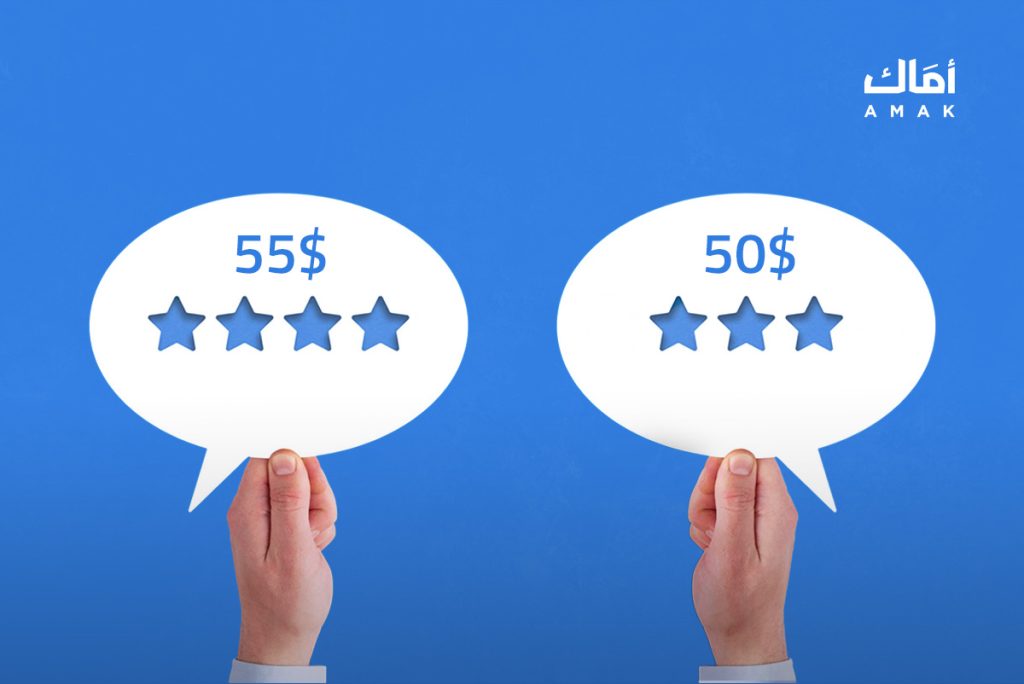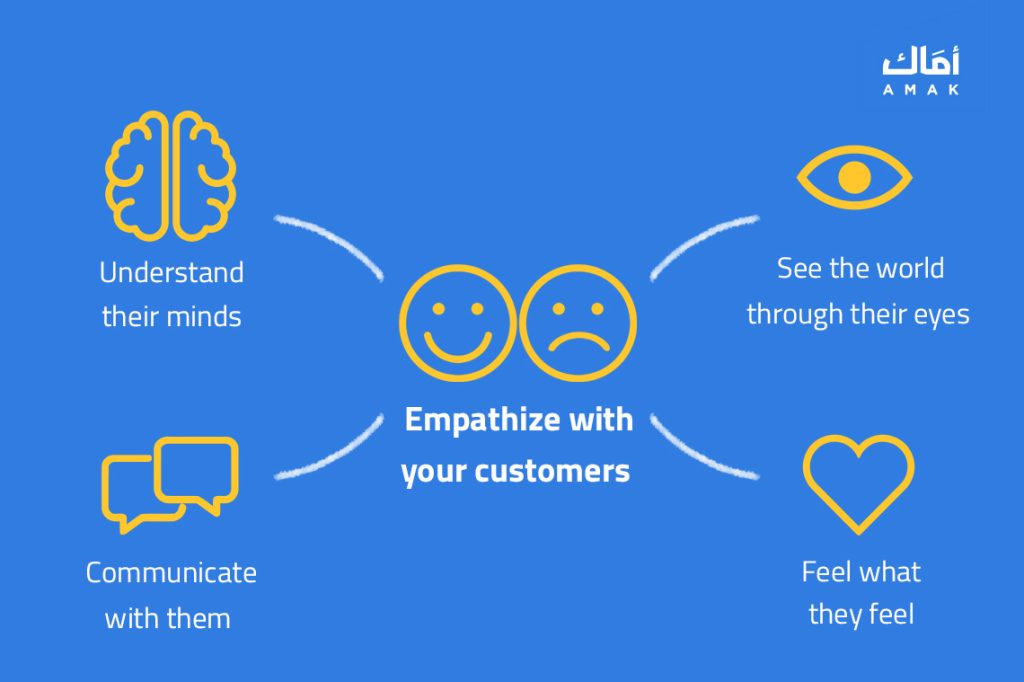
Today, the world is witnessing intense competition between companies and business owners in attracting customers to them by providing distinguished services they believe their customers need, following marketing strategies and using all digital tools in analyzing competitors, knowing the audience, determining what they are looking for, and then providing them with what they need. But most of these companies ignore the essential point to their success: To think of the value proposition (the confidential mix) to make companies unique and drive their customers to buy their products.
Some people confuse the concepts of promotion and marketing. Unfortunately, Arabic content is full of this common mistake, which views marketing as promoting and posting on social media platforms. If you find the traditional methods of promotion an insufficient solution under the severe competition between companies, and you are looking for an innovative solution that distinguishes you from your competitors and draws customers to you, this article is for you. In this article, you will learn about the value proposition concept and its importance to your business. In addition, it discusses levels of value to help you accurately understand the customer’s mindset and other relevant aspects.
Value Proposition Definition and Importance to the Business
Most Arabic websites define The Value Proposition term as a proposed value or offering of a value, while I tend to use the term “embedded benefits,” which goes beyond the concept of direct tangible value to include any benefit that a customer might obtain in exchange for the product or service. When comparing two products, you may choose the more expensive one because it includes more benefits than the cheapest one. For example, if you are on a trip and have two accommodation options, one is in a 3-star hotel at $50. The other is in a 4-star hotel at $55; you may go for the second option because of the peace of mind it entails and a higher level of service and cleanliness than the first option. Value Proposition is a modern concept based on understanding the customer’s needs and the main problems he suffers. It also explains that the offer presented is ideal because it perfectly fits his needs, desires, and expectations and motivates his buying decision.
The value proposition is not limited to the service description and its advantages. Instead, it is a promise made by the service provider to the customer regarding what he will get from purchasing the product or service, and focus primarily on providing a solution to the basic problem that he suffers, to convince him of its importance and the superiority of the provider over his competitors.
The value proposition can then be defined as a set of benefits the product/service provides to the customer. When a customer searches for and decides to obtain a service, he needs something specific from this service, which moves him from a current state to another, wished upon by the promise made. The benefit is Aladdin’s lamp that brings him what he wishes and a secret mixture that we will talk about successively, which prompts the customer to say, “Finally, I have found what I need, and I’m willing to pay for it because it’s worth it.

The Importance of Value Proposition
The value proposition is one of the most powerful and effective marketing strategies; it is also an integral part of the marketing plan for any commercial activity because of its great importance in successfully reaching the target audience in a thoughtful, real and attractive manner. The value proposition is not limited to small projects or giant companies; it is also a fundamental pillar on which to build entrepreneurial startups.
The value proposition helps your business to succeed through the following:
1- A Real understanding of your target segment: If you want to create a set of benefits embedded in your products and services, then as a company owner or an entrepreneur responsible for communicating and empathizing with your audience, you have to think with their minds and feel what they feel; To understand what they are going through, you should not only identify their problems but also help them move from the apparent problem to the real problem (core problem) that they are experiencing and understanding its importance to them so that you create the embedded benefit that guarantees them a solution to their most critical real problems.
2- An increase in your customers’ number as a result of the suitability of your solution to their problems and prefer you over your competitors; Because you are more capable of touching their deep pain and offering them a solution especially dedicated to them.
3- Having an advantage and excellence over competitors by being close to your customers, understanding their changing needs and circumstances that change their purchasing motivation over time, and offering them innovative solutions that your competitors cannot offer because of your better understanding of the target segment.

Value Proposition vs. Added Value
There is a common confusion between the concepts of value proposition and added value. There is a fundamental difference between the two concepts. The Value Proposition represents the deep level of the product or is the central purpose of obtaining the product. The value proposition answers the question “WHY”. Why does the customer buy this product? Why does the customer want to get this service? In other words, the value proposition answers the question, “What is the desired state that the customer wants to reach by acquiring this product or obtaining this service?” As for the added value, it answers the question of “HOW”; How to be better than my competitors? How do I improve my product features?? We notice this difference in the following example: Nokia has focused on the product and its development, and in each product, it developed new advantages that raise the customer’s expectations (added value), while Apple focused on the question of why? Why does a person acquire a mobile phone in the first place? Is it because he loves the phone, its shape, color and tones? Or is it a tool to communicate with others? Hence Apple has been able to provide humanity with the iPhone; Because it offered a cheaper, easier, and faster way of communication than what was commonly known, so work was to develop the benefit provided instead of developing the product itself; Therefore, Apple has led the world’s telecommunications companies by providing a higher level of communication service because it focused on the value proposition.
There is always a primary purpose for obtaining any product, and the continuation of any company, product or service results from focusing on the proposed value. For example, If we ask people what does Lego offer? The majority would have answered: It is a toy company. However, Lego has realized that it is not just a plastic toy company but a company that promotes the value of education through play and participation. This secret allowed Lego to develop and provide interactive educational robots at the forefront in the past years.
Value is the secret of any company, product, or service. It continues to exist and disappear in absence. The largest companies may fall into focusing on the product and developing it rather than focusing on the proposed value and its development. Yet, developing the value proposition is essential for start-up projects to prove their existence, continuity, and expansion.
Preparation of The Value Proposition Model
To ensure the success of the benefit involved, you need to learn the basic stages of preparing the correct model of the value proposed for the benefit involved. This section will discuss the most critical steps you need to follow.
1- Study the target segment
Before you start manufacturing any product or providing any service, you need to identify the target audience, communicate with them, identify the problems they have and find solutions to them, then use this information to determine the product or service that you will provide.
At this stage, companies apply the business model “outside-in” (Pull strategy), which means starting the business journey from the customer and then to the company; collecting the largest amount of information about the target segment, their needs, and circumstances, and offering them a product that suits them; instead of focusing on the advantages known as Solution-Space, which pays attention to the Problem-Space. It is the opposite of the Push Strategy, which focuses on the product and its properties and then promotes it for people to acquire.

2- Explore the real pain of the target segment
know their priorities and move on from apparent problems to explore the pain they are suffering. For example, queuing at supermarket checkout points is an annoying experience for most customers. What will you do if you are entrusted with creating a solution to this problem? The answer may be to increase the number of exit points; therefore, you need more employees and devices, which will be at the expense of the store’s space! We note here that you focused on the apparent problem, which is the time required for the payment process, but let me ask you: What makes a man walk around the store for a long time while choosing what he needs to buy without being disturbed? Why do ladies spend hours shopping and get upset when standing a few extra minutes at the checkout points? So the real problem is not in time, but rather in the boredom of waiting at exit points! Because the shopping experience is fun and the experience of queuing is annoying! From this perspective, you may devise other solutions that are less expensive and more practical than your previous solution by focusing on the apparent problem rather than exploring the customer’s real pain. You should consider making the queuing experience pleasant rather than speeding up the payment process. Remember, asking the right questions is much more important than finding the correct answers to the wrong question! In addition, you need to categorize your audience’s problems, prioritize them for you and focus on the issues that hurt the most (Focus on “Must have,” not on “Nice to have”), to create the main benefit that is the primary motivation for the customer to buy your service over other competitors. Your product does not have to be perfect with all the features and highest specifications. Instead, you must make the appropriate product or provide the right service to solve the customer’s real and top-priority problem.

3- Identify the appropriate practices and methods to produce the proper product for the customer
Now that you have analyzed your audience, understood their needs, and determined the benefit that your product should include, it is time to decide what this product and its specifications are, and focusing on the processes and procedures that you will apply to manufacture this product or provide that service in a manner appropriate to the expectations of potential customers. For example, if you discover that a fair number of potential customers are still looking for delicious ready-made food and the currently available alternatives do not meet their desires, and you can bridge this gap with your previous skills, the question becomes: Will you open a fast-service restaurant? Or a restaurant with a comfortable setting? Or you may open a cloud restaurant and serve your delicious food with delivery service to offices and homes through an application that allows the customer to order what he desires by pressing a few buttons. Note that the procedural processes and operational steps will be completely different in these three cases. The delivery service may be available for the first two options. Still, it is a significant benefit to the cloud restaurant option that cannot be dispensed with because your business is closely related to order delivery to offices and homes due to the physical absence of your restaurant. Of course, the processes associated with the delivery service must be considered, from the shape, size and quality of the storage packages to the delivery method that ensures that the meals will be delivered without damage,
4- Positioning map
It is closely related to your target audience type and the benefit you want to include for them in your products and services. For example, you cannot serve expensive meals if you target the sub-middle income segment of customers. On the other hand, your project won’t succeed if you target the wealthy and open your restaurant in a popular neighborhood. The positioning map allows you to think practically about the main competition determinants and balance the purchasing capabilities of different segments of customers and their intersections with the internal capabilities of your company; To best fit between the benefits that you will include in your products or services, and the needs, desires, problems and conditions of one of these segments, from which your project will start, taking into account the competitive market in which you operate and the advantages and disadvantages of competitors. For example, when Toyota was introduced as a middle-class car and decided to target the upper class, it launched a new brand called “Lexus”. Because the social need (which we will talk about later) this new social segment is looking for cannot be presented by Toyota, the company decided to place Lexus higher than Toyota, presenting it as a luxury and distinction car.
Study Customer’s Personality or Create Customer’s Profile?
You will not be able to provide a real benefit without an in-depth analysis of your potential client’s personality and drawing general features for the segment he represents. Marketing psychology divides customer profiles into three main elements:
1- Determination of the customer’s main motivation behind acquiring the product or service and the qualitative shift the product makes in his life
At this level, when studying the client’s personality, you can apply the framework ” Jobs-to-Be-Done“. As the owner of an idea or company, you should search for the ultimate purpose that your product or idea provides to the customer. Talking about a drilling tool as an example, why does the customer buy the drilling tool? Of course, not for its shape, color, or size; He buys it for the hole this tool makes, so the primary goal of buying a drilling tool is only making a small hole. Assume that a mobile company has developed an application that creates a hole once the mobile camera is placed on the wall for 3 seconds; who will use the drilling tool anymore? Not due to any defect in it; rather, the new product simply achieves what the customer wants in an easier, simpler and more affordable way.
Some may ask why we mention this part even though it is crystal clear. We focus here on the importance of knowing the main goal of the product or service provided, which may create great competitive prospects for you. So how can you compete with cinema? The traditional answer is to open a new cinema that offers higher services than the market, but do you have enough money for such a huge investment? While if we analyze what is the main purpose that drives people to a movie, we can divide the audience into several segments: some of them want to watch the film for the sake of watching, and some of them want to go to the cinema not to see the movie itself, but because of their desire to break the routine, reduce work pressure and spend nice time with his wife. From here, we start with what I am trying to convey to you; by focusing on this segment, and defining its purpose of going to the cinema, then you can provide a service that achieves the same goal that the cinema offers them, such as opening a party planning company and providing couples with a quiet and beautiful romantic evening outside the home, reminding them of their first days of marriage. Hence you can compete with cinemas without investing large sums. So you should always focus on the product’s purpose and role; to be transferred from a current situation to a second hoped state instead of focusing on the competitive advantages of products and services..

People are generally motivated to make a purchase decision by satisfying their needs, which we classify into three main needs:
1- Functional needs
you buy a car because you want to end the suffering of public transportation. Only matters for the car to do what is required: delivering you from point A to point B without problems and delays. You go to a restaurant to eat just because you are hungry and need a restaurant that serves clean, tasty food at a reasonable price. Arriving at our destination respectfully without wasting time and ending the feeling of hunger are examples of our functional needs that drive us to make a purchase decision.
2- Social needs
Not all people always buy to satisfy only functional needs. So whoever buys a Ferrari or a Bentley, for example, reaching the final destination is not his only concern, instead to show himself belonging to a particular social class. The car he drives is like the pen he carries, and the clothes he wears are a set of tools aimed at distinguishing him from other social strata, making him feel that he belongs to a specific social class with whom he shares many values, ideas and interests. The need here is due to the social message you want to convene as a contract partnership meeting at a luxurious location; to reflect a certain social level of our company which we want to show to the representatives of the second company.
3- Emotional needs
Sometimes we pay a lot of money, not because of social bragging or prestige at work, but because of inner emotional needs we can’t hold back. Have you ever noticed that large retail stores place tempting products for children on the bottom shelves and at the checkout points? These products simply move the emotional desires of the children, which in turn stirs the parents’ emotional desires; so the stores have pressed the emotional needs button realizing that parents are always vulnerable to what their children demand. Have you ever been to a particular restaurant because it is associated with a special memory for you? What drives you to this restaurant on a specific date? It is the same emotional need that prompts many residents of Gulf States to replace their small or regular cars with an SUV after the arrival of their first birth because they are safer in countries where the rate of hazardous accidents is relatively high. What does that mean? Even if a person is happy with a small car, he has to buy an SUV to boost a particular emotional state.
So knowing and analyzing the main purpose the customer needs, which may be one or more of these forms: Functional, Emotional, or Social, allow us to understand the qualitative shift that the customer wants from acquiring our product or obtaining our services, and this point is the first step in drawing customer profile to stimulate his purchasing motivations.
2- Customer problems with competitors’ products are known as “Pains”
As mentioned above, we need to know the customer’s current problems and his serious problem. His problem may be with the high price, poor customer service, the long delivery time, the complexity when trying to order, the lack of flexibility to modify the product or service offered, or many other problems. It is essential to stay close to your customers or empathize with them to realize their main problems that you have to solve exactly. No product or service makes sense unless the benefit involved considers the solution to the client’s problems.; Therefore, before launching a service, product, or company, be sure to offer a solution to a real problem your customer suffers. We always emphasize that the problem must be a major problem, not a secondary one, especially at the beginning. Try to find out your customer’s main problem so that you provide them with a solution that stimulates the purchase decision, makes them grateful and pays money without hesitation.
3- Additional Desires “Gains”
Refers to additional motivations that increase the customer’s happiness and satisfaction. Solving the problems contributes to making the purchase decision for the first time. Knowing the additional incentives that increase the customer’s happiness and satisfaction contributes to repeating the purchase many times due to his admiration for what you offer compared to his prior expectations. Additional desires are divided into three types:
- Expected Gains: It’s like expecting a pleasant restaurant experience. This is the minimum stimulus; the level the customer gets fits the prior expectations you promised.
- Desired Gains: They are incentives the customer wishes exist. For example, you wish the taxi company could provide free internet service during your trip.
- Unexpected Gains: Desires that would not have crossed a customer’s mind before, such as getting your own exclusive discount on your birthday from a store you usually visit.
These three desires will make the customer more loyal to the brand. It is necessary to point out that your commitment to providing unexpected desires will turn over time into expected desires. If you prevent them from the customer after he gets used to them, you will create a new problem for him! In summary, the essence of the benefit provided should simulate the customer’s profile you have drawn. The more accurate your image of the customer is, the more you create suitable benefits for him. The higher the suitability, the higher the probability of selling. Your accurate knowledge of the three components of Jobs-To-Be-Done: The deep purchasing goals and the qualitative shift that the product makes in the customer’s life, and “Pains” problems and desires that qualify you to design the right product that performs its purpose, solves the customer’s problems with products and the currently available alternatives, increases client’s happiness and satisfaction with enticing incentives it contains, whether they are wished or unexpected.
Marketing Psychology and its Role in Purchasing Decisions
Psychological marketing is defined as a marketing strategy that adopts the principles of psychology to gain customers, persuading them to take the required action to achieve marketing goals and increase sales. Arguably, it studies the psychological factors influencing purchasing decisions and their use in marketing operations.
Psychological marketing is based on building an emotional connection between the product and the customer and a sense of the product’s relevance to him. The customer often makes his purchasing decisions with his passion rather than his mind; The more he feels the importance of the product, the faster he will make a purchase decision. Watch the video.
In the western world, 90% of purchasing decisions are made on an emotional basis, and only 10% of them are on a rational basis. In contrast, the Arab world, dominated by emotion, is growing rationally with the decline in income levels or increased competition.
The book Do not make me thinksays that successful marketing, whether launching an advertisement or creating a website or brochure, does not allow the customer to think. There are many examples of this, for example, large numbers of people sleeping on the street to get Nike’s Brand shoes, so purchasing decisions are primarily based on emotion and not reason. For this, discover the nature of your audience through your marketing plan by launching marketing messages that help you identify their purchasing decision trends. In this matter, you will benefit from applying a test A/B Testing to determine preference among the available options; or publish two posts, one emotional and one rational post, then measure the results.
Marketing psychologycurrently plays a fundamental role in the success of commercial activity, and traditional theories that adopt certain classifications such as gender, age, and social level are no longer sufficient to achieve the required results. Therefore, creating the benefit involved requires a psychological study of the client, where the value changes by changing the client’s circumstance. For that reason, always strive to understand the motives of his request for a service, then provide him with the service that meets this motive and simulates the same value for him. Remember the child who sells you water in the summer; if some summer rain falls, he will sell you an umbrella. What has changed in you? Nothing! But what has changed is the circumstance you are in. The different circumstances surrounding us play a significant role in our purchase decision. This part is not dealt with by traditional marketing theories but is considered by the concept of the benefit involved.
In conclusion, companies seeking to stand out against competitors need the value proposition in their marketing plan to address their audience, think about their ideas, and come up with services and products they need instead of providing services that they believe are important to them. Reading these lines is the beginning of adjusting your marketing concept and changing your perspective in addressing your audience. Remember that your audience is your compass at work, and your company has been found to meet their needs and profitably solve their problems.